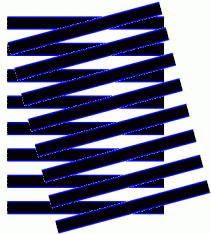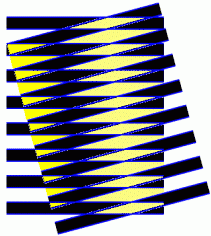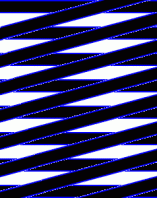Fringe shift
In interferometry experiments such as the Michelson–Morley experiment, a fringe shift is the behavior of a pattern of “fringes” when the phase relationship between the component sources change.


A fringe pattern can be created in a number of ways but the stable fringe pattern found in the Michelson type interferometers is caused by the separation of the original source into two separate beams and then recombining them at differing angles of incidence on a viewing surface.
The interaction of the waves on a viewing surface alternates between constructive interference and destructive interference causing alternating lines of dark and light. In the example of a Michelson Interferometer, a single fringe represents one wavelength of the source light and is measured from the center of one bright line to the center of the next. The physical width of a fringe is governed by the difference in the angles of incidence of the component beams of light, but regardless of a fringe's physical width, it still represents a single wavelength of light.[1]
Discovery


In the 1887 Michelson–Morley experiment, the speed that the two beams traveled down the perpendicular arms was expected to be altered by an apparent aether wind caused by the Earth's motion through the luminiferous aether. This time difference was calculated to result in a phase shift of 0.4 wavelengths. This means that as the interferometer's arms were spun to face into and against the ether wind, the vertical fringe lines should have moved across the viewer 0.4 fringe widths left and right for a total of 0.8 fringes from maximum to minimum. Michelson reported that only between one-sixth and one-quarter of the expected reading was found.[1]
References
- Michelson, Albert Abraham. The Relative Motion of the Earth and the Luminiferous Ether. pp. 336–345.
See also
- Interference
- Interferometer
- Beat (acoustics)
- Moiré pattern